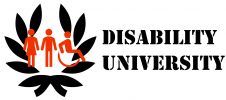Childhood Mental Disorders for SSI and SSD
Childhood SSI and SSD mental disorders as defined by the Social Security Administration (SSA) are categorized just as adult SSI and SSD disorders are catagorized. The listings can be found here: http://www.ssa.gov/disability/professionals/bluebook/112.00-MentalDisorders-Childhood.htm
LEE ANN TORRANS: I no longer practice law. Please Review the Terms of Use of this Website.
112.10 Autistic Disorder and Other Pervasive Developmental Disorders: Characterized by qualitative deficits in the development of reciprocal social interaction, in the development of verbal and nonverbal communication skills, and in imaginative activity. Often, there is a markedly restricted repertoire of activities and interests, which frequently are stereotyped and repetitive.
The required level of severity for these disorders is met when the requirements in both A and B are satisfied.
A. Medically documented findings of the following:
1. For autistic disorder, all of the following:
a. Qualitative deficits in the development of reciprocal social interaction;
AND
b. Qualitative deficits in verbal and nonverbal communication and in imaginative activity; and
c. Markedly restricted repertoire of activities and interests;
OR
2. For other pervasive developmental disorders, both of the following:
a. Qualitative deficits in the development of reciprocal social interaction;
AND
b. Qualitative deficits in verbal and nonverbal communication and in imaginative activity;
AND
B. For older infants and toddlers (age 1 to attainment of age 3), resulting in at least one of the appropriate age-group criteria in paragraph B1 of 112.02; or, for children (age 3 to attainment of age 18), resulting in at least two of the appropriate age-group criteria in paragraphs B2 of 112.02.
MEDICAL AND FUNCTIONAL CAPACITY ASSESSMENT (CHILD)
TO: ________________________________________________________________________
RE: Patient: ________________________________________________________________
Date of Birth: SSN: ________________________
SSI/SSD Review of Child’s Medical Impairments
How long have you treated the child and how often do you see him/her?
What is/are your diagnoses, and provide your estimated date of onset?
Please identify the clinical findings and objective signs supporting the diagnoses.
Please list your patient’s symptoms.
For an Autistic Diagnosis:
Please be specific regarding qualitative deficits in the development of reciprocal social interaction;
Please be specific regarding qualitative deficits in verbal and nonverbal communication and in imaginative activity;
Please be specific identifying whether there exists a markedly restricted repertoire of activities and interests;
Have the child’s impairments lasted or can they be expected to last at least twelve months?
Yes No
Functional Capacity Assessment for Autism
Please assess how the child’s impairment(s) affects his/her development and performance of age-appropriate activities in the domains listed below compared with children the same age who do not have impairments.
Please Consider the Following Factors:
Chronicity of illness, exacerbations, and remissions
The effects of treatment, including adverse and beneficial effects of medications and other treatments
The need for structured settings, adaptations, and extra help
The combined effects of multiple impairments and the interactive and cumulative effects of an impairment(s) on the child’s activities (e.g., a single impairment may have effects in more than one area of functioning)
Ability to Function in Productive Environment
1. Acquiring and using information. This domain includes the ability to think, to
acquire and use information, visual and verbal reasoning, problem solving, and idea development. It also includes perceptual, sensorimotor, language and memory processes necessary to learn.
Level of Impairment:
none to slight
moderate
marked
extreme
not able to assess
Attending and completing tasks. This domain considers the child’s level of alertness, ability to work at an appropriate pace, allay impulses, and initiate, sustain and change focus. It also includes the capacity to focus on certain stimuli and ignore others.
Level of Impairment:
none to slight
moderate
marked
extreme
not able to assess
Interacting and relating with others. This domain assesses all aspects of social interaction and relationships with groups and individuals. This incorporates speech and language skills necessary to communicate effectively. It also includes the ability to respond to emotional and behavioral cues and form intimate relationships.
Level of Impairment:
none to slight
moderate
marked
extreme
not able to assess
Moving about and manipulating objects. This domain looks at the child’s ability to perform physical functions like sitting, standing, balancing, shifting weight, bending, crawling, running, and transferring. It also includes the ability to hold, carry, and manipulate objects, as well as the capacity to plan, remember and execute movements. Also considered are the child’s coordination, dexterity, and integration of sensory input.
Level of Impairment:
none to slight
moderate
marked
extreme
not able to assess
Child’s Ability to Care for Him/Herself
Measure the child’s ability to care for his or her physical needs and to maintain a healthy emotional state. It includes the ability to care for one’s own health and safety and to cooperate with others to meet one’s needs. It also incorporates the concept that the child should be developing an increasing sense of independence and competence.
Level of Impairment:
none to slight
moderate
marked
extreme
not able to assess
Health and physical well-being. What are the cumulative physical effects of physical and/or mental impairments. Considered are the effects of chronic illness, including shortness of breath, reduced stamina, pain and poor growth. Also includes are the impact of therapies, medications and periods of exacerbation and remission.
Level of Impairment:
none to slight
moderate
marked
extreme
not able to assess
Please add any other comments which you feel will be helpful in assessing the child’s disability:
Date:
Signature Block
Lee Ann Torrans
SocialSecurityStrategy.Com
